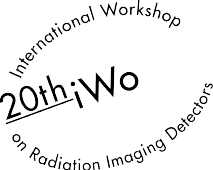Speaker
Description
The entire tracking system of the ATLAS experiment will be replaced during the LHC Phase II shutdown (foreseen to take place around 2025) by an all-silicon detector called the “ITk” (Inner Tracker). The pixel detector will comprise the five innermost layers and it will be built of new sensor and readout electronics technologies to improve the tracking performance and cope with the severe HL-LHC environment in terms of occupancy and radiation.
A new on-detector readout chip has been designed and produced in the context of the RD53 collaboration in 65 nm CMOS technology. This paper will present the on-going R&D within the ATLAS ITK project towards the new pixel modules.
Planar and 3D sensors have been re-designed with cell sizes of 50x50 or 25x100 μm2, compatible with the RD53 chip. A sensor thickness equal or less than 150-200 μm is foreseen for the outer layers, where high yield and low costs are required, and 100-150 μm in the two innermost ones where radiation hardness is the major concern. Several prototyping sensor productions are being carried out at the moment in collaboration with commercial vendors to identify the best technology for the different pixel layers.
A particularly challenging aspect of the ITK pixel module assembly is represented by the sensor-chip interconnection given the large area to be covered and the compressed production schedule. An intense R&D is being carried out to satisfy the yield requirements when using 100-150 m thin chips with the higher bump density and the larger chip wafer size (12” for the 65 nm CMOS technology versus the 8” of the 130 nm CMOS).
After extensive characterization of the sensors in the laboratory, their charge collection properties and hit efficiency are measured in common test-beam campaigns, which provide valuable feedback for improvements of the layout. Testbeam measurements of the final prototypes will be used for the decision of which sensor types will be installed in ITk.
The setups used in the ITk Pixel testbeam campaigns will be presented and results from the latest measurements will be shown, highlighting some of the developments and challenges for the ITk Pixel sensors.
